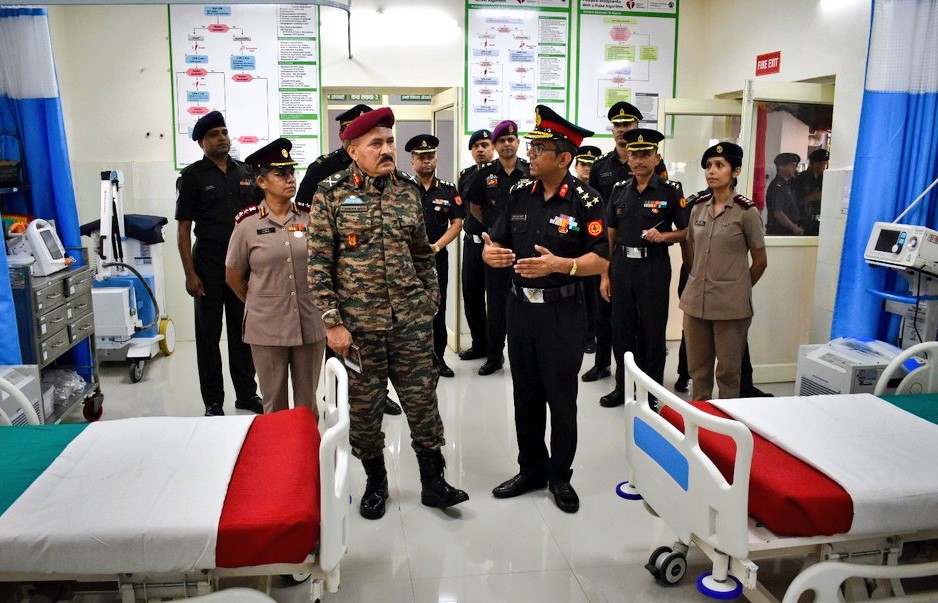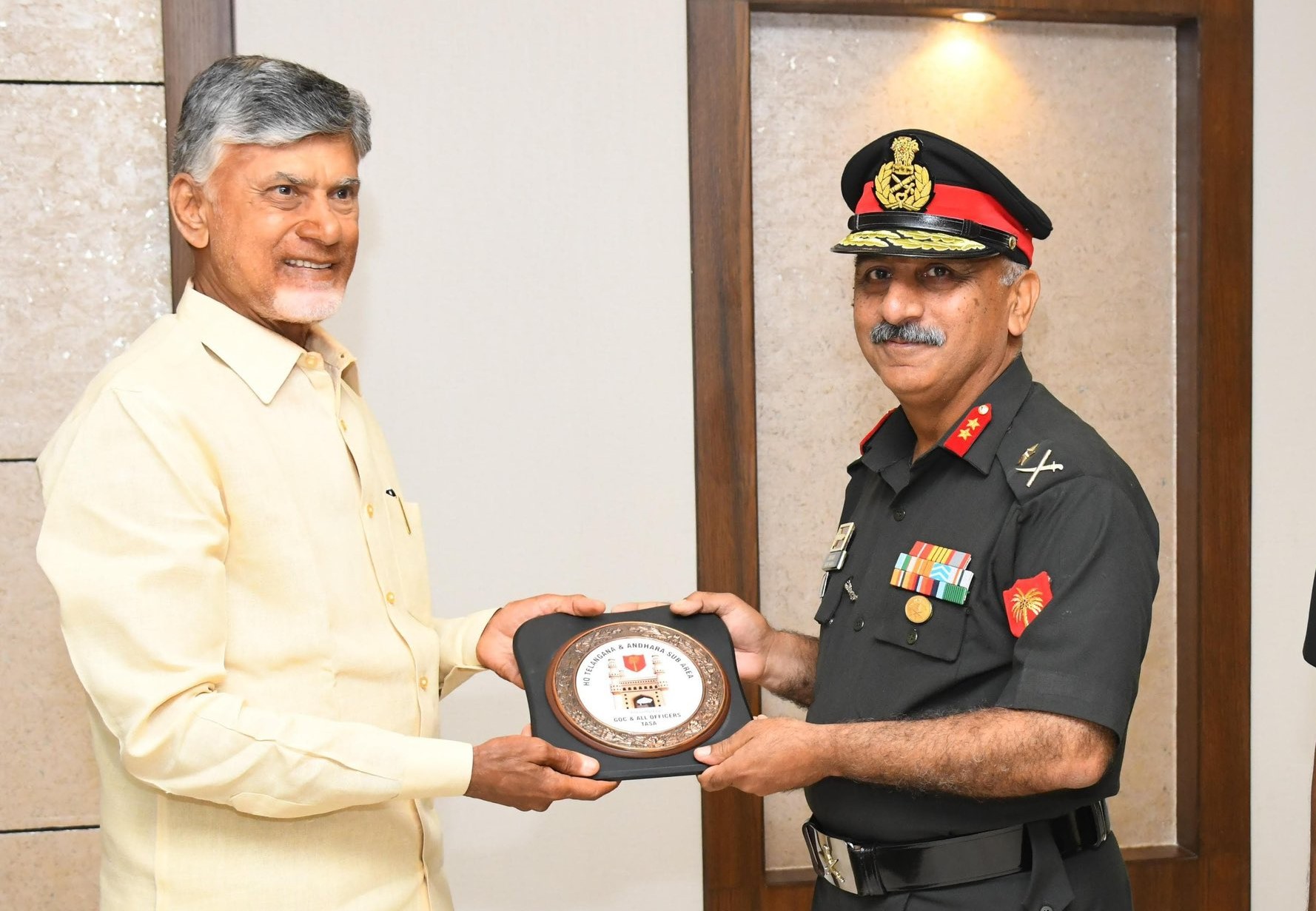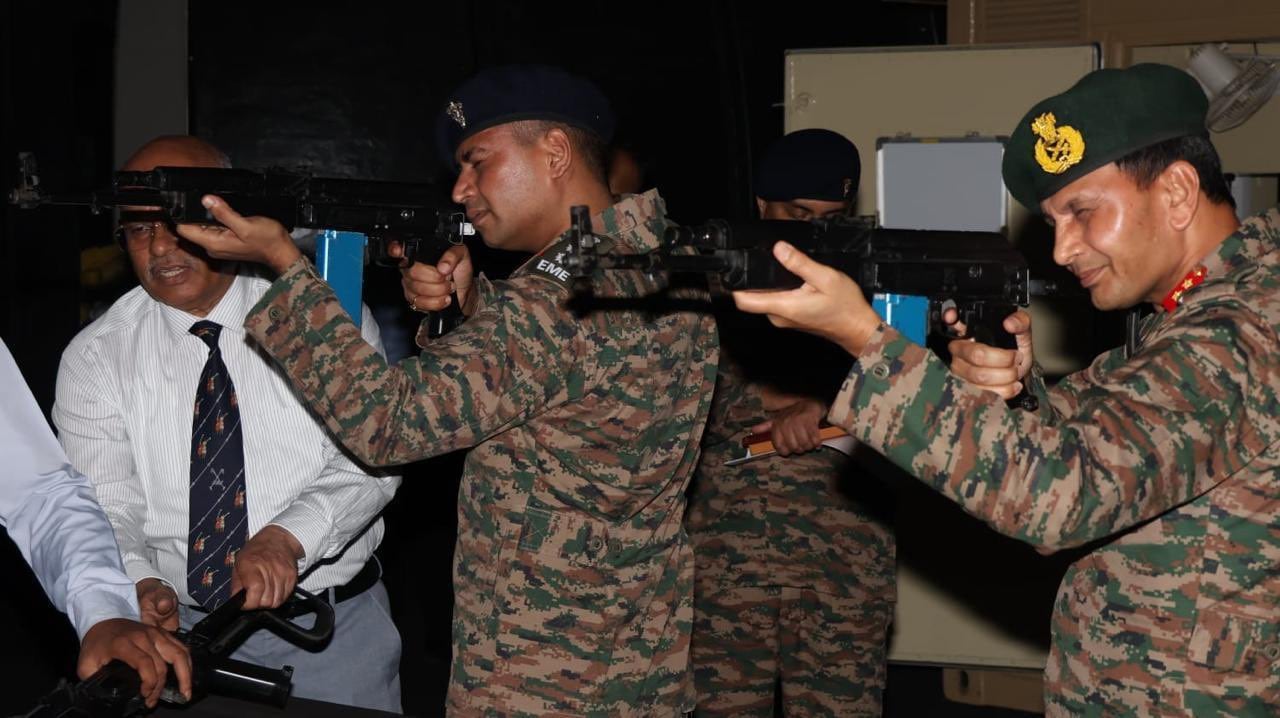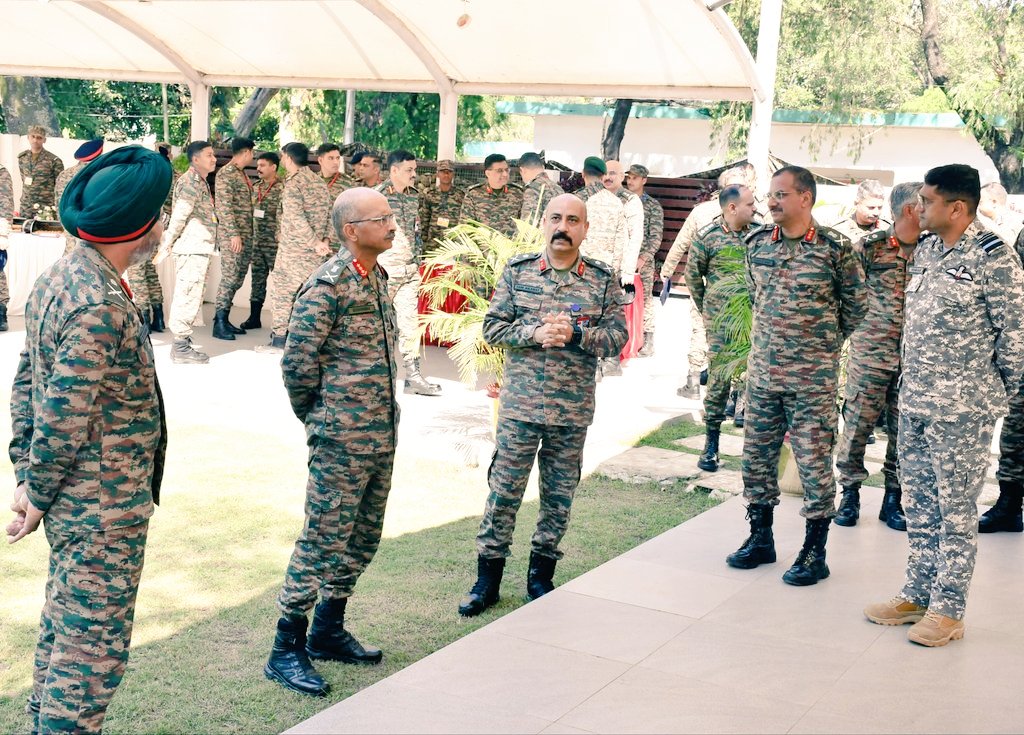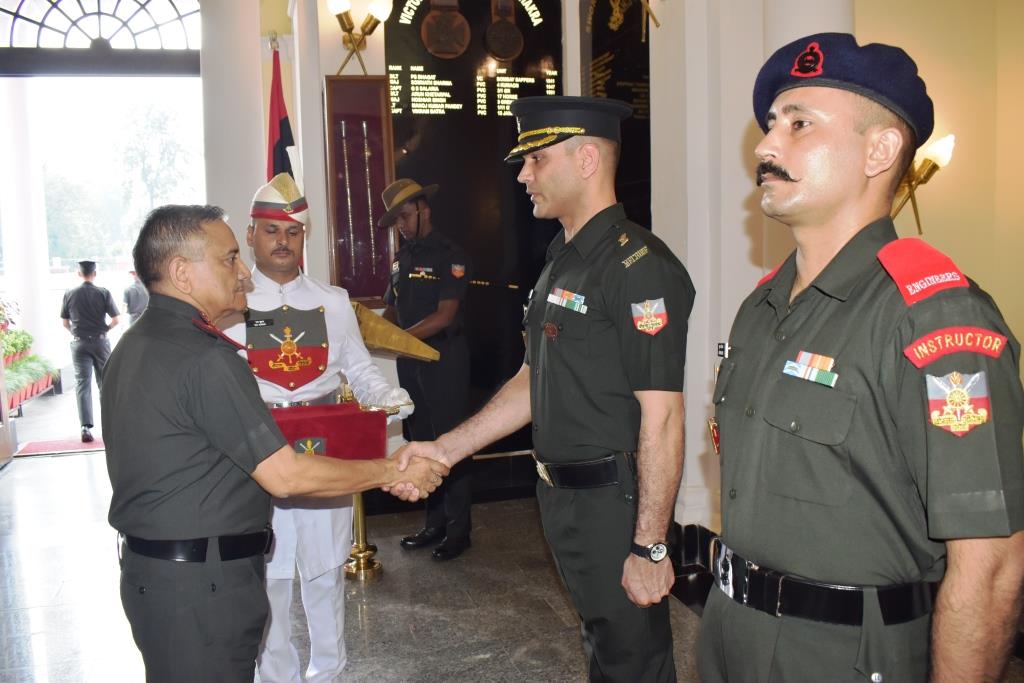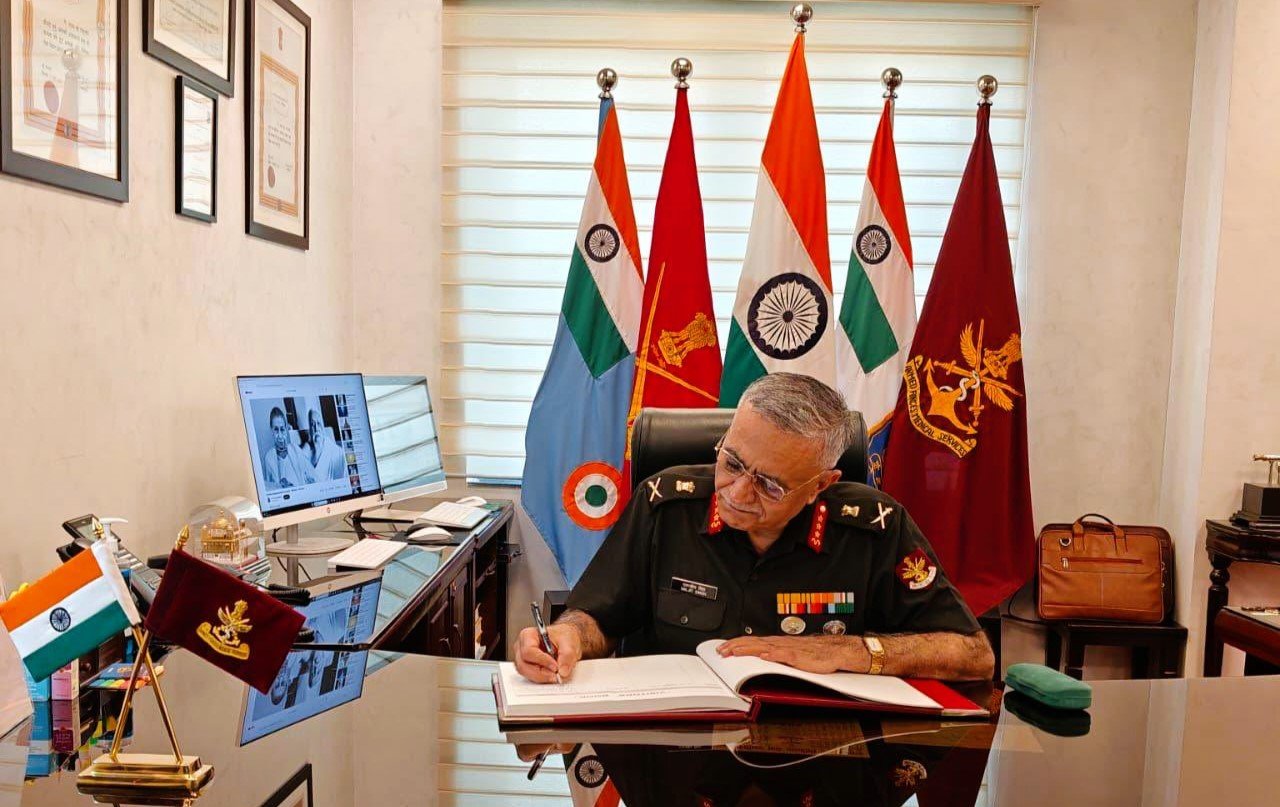Maj Gen Yoginder Singh Conducts Technical Inspection of Military Hospital Roorkee
Major General Yoginder Singh, MG (Med), UB Area, conducted a comprehensive technical inspection of the Military Hospital, Roorkee today, as…
Major General Rakesh Manocha Meets Andhra Pradesh CM Nara Chandra Babu Naidu
Major General Rakesh Manocha, SM, VSM, General Officer Commanding of the Telangana & Andhra Sub Area, held a significant meeting…
Maj Gen Akhilesh Kumar, GOC Bison Division, Pushes for Indigenisation with Visit to Defense Manufacturers and T-Hub in Hyderabad
In line with the Government of India's Atmanirbhar Bharat initiative, Major General Akhilesh Kumar, General Officer Commanding (GOC) of the…
Dhruva Air Defence Conclave 2024 Held at Udhampur: Focus on Joint Deployment of Air Defence Systems
Udhampur: The Dhruva Air Defence Conclave 2024 was successfully conducted in Udhampur, focusing on strengthening India's air defence capabilities in…
CDS General Anil Chauhan Visits Indian Military Academy
In a significant visit to the Indian Military Academy (IMA), General Anil Chauhan, Chief of Defence Staff (CDS), addressed officers…
Lt Gen Daljit Singh Superannuates After Over 40 Years of Distinguished Service as DGAFMS
Lt Gen Daljit Singh, Director General of Armed Forces Medical Services (DGAFMS), officially relinquished his post today, marking the end…

